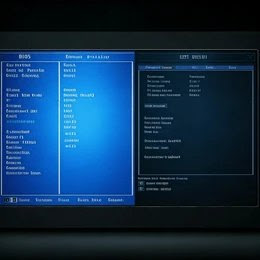Difference Between BIOS and UEFI: What You Need to Know
 |
| bios vs uefi . |
Boot Firmware Evolution
BIOS (Basic Input/Output System) and UEFI (Unified Extensible Firmware Interface) are two types of firmware interfaces responsible for initializing hardware and booting operating systems. Understanding their differences helps you navigate modern PC setup and troubleshooting.
What Is BIOS?
BIOS is the traditional firmware interface found in most computers since the 1980s. It performs hardware initialization during the boot process and provides runtime services for operating systems.
What Is UEFI?
UEFI is the modern replacement for BIOS with enhanced features such as faster boot times, support for larger drives, and a more user-friendly interface. It also includes secure boot capabilities for enhanced security.
Key Differences Between BIOS and UEFI
| Aspect | BIOS | UEFI |
|---|---|---|
| Boot Mode | Legacy BIOS boot | UEFI boot with support for legacy |
| Interface | Text-based, limited interface | Graphical interface with mouse support |
| Drive Support | Up to 2.2 TB with MBR partitioning | Supports drives larger than 2.2 TB with GPT |
| Security Features | Limited | Secure Boot to prevent unauthorized OS boot |
| Boot Speed | Slower | Faster boot times |
| Extensibility | Limited | Modular, supports drivers and apps |
Advantages of UEFI Over BIOS
-
Supports modern hardware and larger disks
-
Enhanced security with Secure Boot
-
Flexible and easier to update
-
Faster and more efficient startup
When to Use BIOS vs. UEFI
-
Older systems use BIOS, while most modern PCs now use UEFI.
-
UEFI is recommended for newer hardware and operating systems like Windows 10/11.
Conclusion: Transitioning from BIOS to UEFI
UEFI represents the future of PC firmware, offering better performance, security, and flexibility. However, BIOS remains relevant for legacy systems.
Can I switch from BIOS to UEFI?
Yes, if your hardware and OS support it, but it may require reformatting the drive to GPT.
Is UEFI compatible with all operating systems?
Most modern OSes support UEFI, but some older OSes may not.
Tidak ada komentar untuk "Difference Between BIOS and UEFI: What You Need to Know"
Posting Komentar